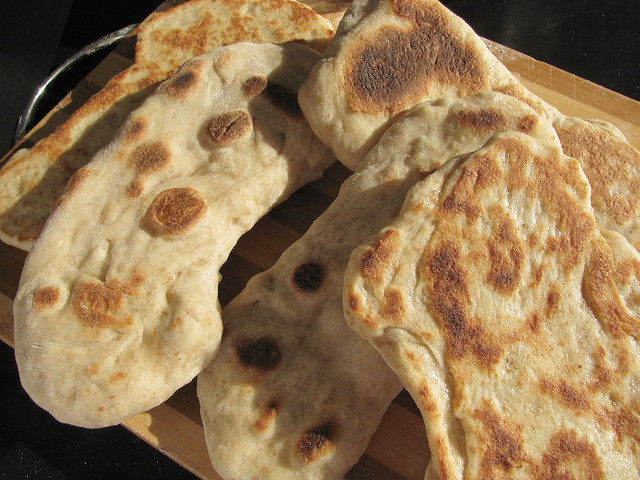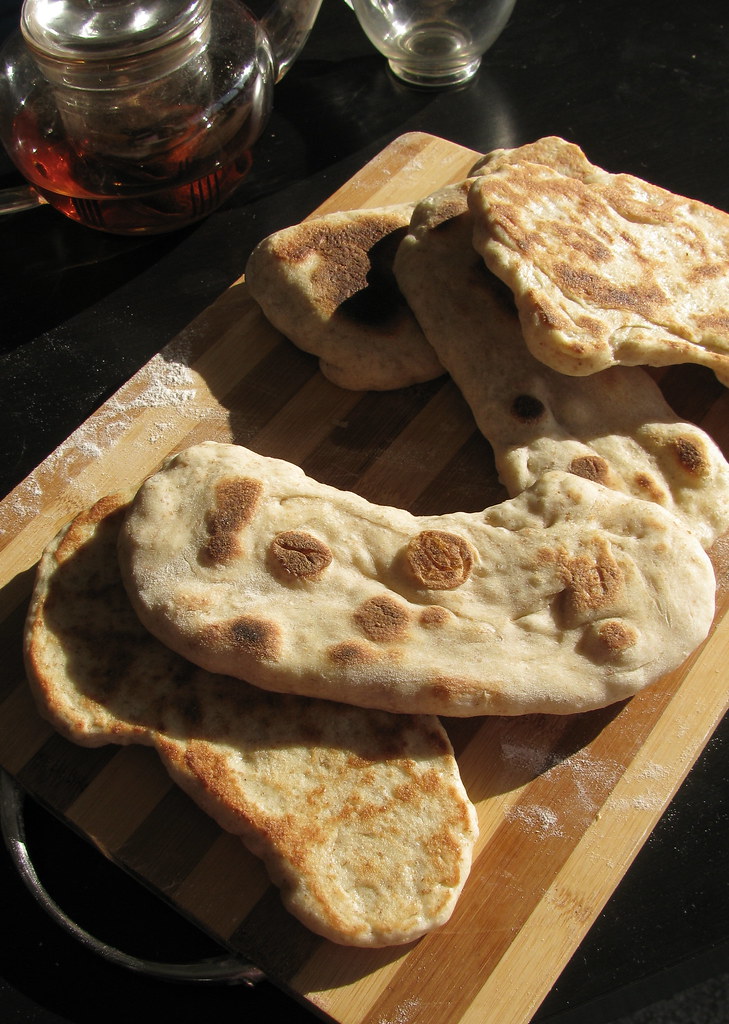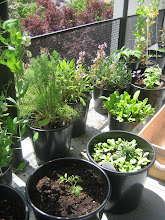A very long time ago, I posted a recipe for spinach lentil curry. It's one of my staples in cooler weather, but I wanted something a little different to go with it. I also love naan, but buying anything made out of bread these days seems like an extraordinary expense. These aren't authentic naan, but they're pretty good.
Naan procedure:
Use the pizza dough recipe from the last post, but swap in about 25% whole wheat flour.
Knead and rest the dough the same way, and when you're ready to use it, pull it out of the fridge and deflate it. Put a little oil on your hands to keep the dough from sticking to you, and tear off pieces of dough about twice the size of a ping pong ball. Stretch them out until they are about the size of your palm, then set them aside to rest for bit.
Meanwhile, heat a heavy skillet to medium low. I use a cast iron pan. You don't need to oil the pan, but you do need a lid for it.
Once the pan is hot, put a bit more oil on the dough bits and pat them out until they are about 1/4" thick, then lay them in the pan. My skillet is just about big enough to cook 2 at a time. Cover the pan and let the naan cook for 3 minutes, turn them over, and cook them another 3 minutes. That's it!
As usual, there are some things I think are important to pay attention to.
 1. The pizza /baguette dough formula calls for bread flour. This makes it chewy. Adding whole wheat makes it slightly less so, but traditionally naan is made with a lower protein flour. All purpose flour would probably be closer.
1. The pizza /baguette dough formula calls for bread flour. This makes it chewy. Adding whole wheat makes it slightly less so, but traditionally naan is made with a lower protein flour. All purpose flour would probably be closer.2. Also traditional is the use of copious amounts of butter, mostly for frying, but also I think there is some butter or oil in the dough itself. Again, this would tenderize the dough, if you wanted a more traditional end product.
3. Additional ingredients commonly used are nigella or cumin seeds, anise seed, or caraway seed, also fried onions and or potatoes are often mixed in. I didn't have any of those things on hand when I took a notion to make these.
4. The toasty bits are vitally important! If you don't have any little chewy crusty dark bits, it won't taste like naan.
So why did I decide to use this somewhat deviant recipe to make naan? Because of my desire to have a range of versatile, cheap, generic, ingredients that I can dress up a variety of ways. A wad of flour, water & yeast doesn't get much more basic, but already I've used it for French, Italian, and Indian cooking styles. I haven't made any steamed buns with it yet, but that's next on the list.







No comments:
Post a Comment